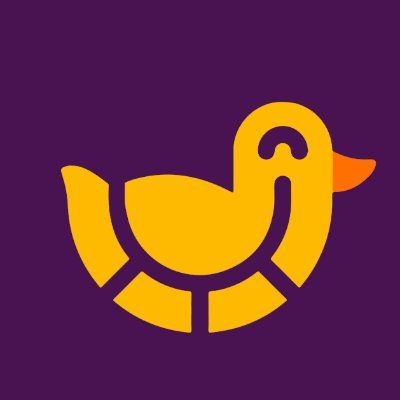Surprising Board Games Statistics to Look Out for in 2024
Board games have risen in popularity in recent years with more options in the market. While the younger years were filled with competitive game nights playing Monopoly, the board game industry has made a comeback.
The best-selling tabletop game on Kickstarter was a board game called Etherfields. The game received over $5 million from around 33,000 backers in 2019.
Board game production, sales, and competition have massive growth, and the industry thrives. Read and discover fascinating board game statistics you need to know in 2023.
Highlights of the Article
- North America will have the fastest board games market growth of 12.29% between 2023 and 2030.
- The revenue of the board games market for 2023 is around $3.39 billion.
- In 6 years, the board game market will create $20 billion in opportunities.
- The revenue change for 2023 is 16%. This figure is 4.4% more than in 2022, with $2.93 billion in board games market revenue.
- North America has the most prominent industry share of 28.88% in 2022.
- 38% of Gen Z in America find board games enjoyable.
- Strategy games hold 69% of total sales in the market.
- With 3 million sold yearly in the U.S., chess is the best-selling board game ever.
How Popular Are Board Games?

The board game industry revenue will be approximately $3.39 billion worldwide in 2023. This figure is far more than the past five years; forecasts show it will reach $4.85 billion in 2027.
The top five regions that hold vast portions of that number are
- United States
- China
- United Kingdom
- Japan
- South Korea
Individuals worldwide have become more creative in playing board games, challenging game developers and designers for more options.
Let’s explore more data about the board game industry.
Board Game Market Size
Board games promote sportsmanship, family, teamwork, and competitiveness. Other board games are collectibles. An example of this is a vintage board game called Monopoly Atlantic City from 1933 that got sold in an auction for $146,500.
With the board game’s long list of benefits and kinds, its market size thrives. Here are other statistics surrounding its growth:
1. The global market size of board games reached $15.1 billion in 2022.
(IMARC)
The market size will grow up to $29.7 billion in 2028. These figures show a compound annual growth rate (CAGR) of 11.2% between 2023 to 2028. Board games in these numbers include the following:
- Tabletop
- Collectible
- Card and dice
- Miniature
- Role-playing games (RPG)
2. North America has the largest segment in the global board games market, with an industry share of 28.88% in 2022.
(arizton)
The study’s geography analysis includes Latin America, Asia Pacific, Europe, the Middle East, and Africa.
Some popular board games in North America are from the European style. Americans prefer tabletops that fully engage the players resulting in more demand for the European style.
European strategy games like Catan and Carcassonne have recently entered the U.S. market.
3. 41% of gamers buy 5 to 10 new games yearly.
(Print Ninja)
Studies have shown the buying habits of board game fans yearly, stating the following::
- 24% – 11 or more games
- 27% – over 30 games
- 35% – four games or fewer
- 41% – 5-10 new games
These gamers may also be collectors. Not only do they enjoy playing board games, but they also collect the games and fill up their shelves.
4. The Asia Pacific board games market accounted for $5.38 billion in 2022.
(arizton)
The annual saving ratio of Asia Pacific countries is higher than the E.U. and U.S. countries. China’s yearly average saving ratio is around 50%, and India’s and South Korea’s is over 30%.
Board game users in Asia Pacific prefer local low-cost brands rather than high-priced premiums. This reason maintains the low penetration of highly-priced board games.
Board Game Players Demographics
Board games are accessible to people from different generations and backgrounds. The question is, to whom do board games appeal more or less? Stick around and discover more demographics and insights.
5. 38% of Gen Z in the U.S. enjoy playing board games.
(techpenny, INSIDER INTELLIGENCE)
More Gen Zs enjoy playing board games than the older generations. Gen Z refers to the age group born between 1997 to 2012.
Forecasts show that Gen Z will become the most significant portion of consumers. This figure gives game devs insight into the potential target market for board games.
6. 57% of the gamers own between 1 to 25 card and board games.
(Print Ninja)
22% of gamers own between 26 and 50 board games, and 5.9% have 76 to 100. There are even 10.9% who own more than 100 games.
These figures show that despite the rise of technology, gamers still enjoy keeping or owning card and board games.
7. Ages 5 to 12 years old dominate the board games market.
(IMARC, N.B.C. news)
The global board games market has kids as its biggest consumers. Some of the best board games kids play are the following:
- Spot It
- Just One
- Animal upon Animal
- Dragonwood
- And many other board games
8. 27.9% of board game players have a high school diploma as the highest educational attainment.
(techpenny)
In the U.S., 14.9% of board game players completed college but don’t hold a degree. Also, 8.9% of board game players ages 25 and above don’t have a high school diploma or equivalent.
This figure shows that board games don’t require a degree for a player to enjoy them. This statistic can be helpful to those who are intimidated to join board game communities and events.
Board Game Industry Growth Statistics
As the revenue of board games has increased in recent years, its fast-growing market plans to continue. The statistics you’ll encounter are all about the development of the industry.
9. The forecast shows North America has the fastest CAGR of 12.29% between 2023 and 2030.
(VERIFIED MARKET RESEARCH)
The trend of board game cafes attracts millennials who look for old-fashioned recreational activities. This region will have a steady demand increase for board games, collectible card games, and more.
Some of the key players in this forecast are:
- Boda Games
- Games Workshop Group P.L.C.
- Grey Fox Games
- Disney
- Delan Service
- Asmodee Group
- Hasbro
- Mattel
- Ravensburger
10. The industry of board games will create a $20 billion opportunity in 6 years.
(P.R. Newswire)
Vendors changed their sales measures due to the pandemic. They are now focusing on operations that concern their customers to regain market growth.
Developers also pay attention to their Research and Development (R&D) to run longer and have an edge in the market.
11. Experts note that the Asia Pacific board games market will exceed $4 billion in 2025.
(Gitnux)
This figure reflects the increasing popularity of board games in the Asia Pacific. Many are enjoying traditional and new board games. This growth also means that there will be more options for enthusiasts.
12. In 2030, the board games market will reach $37.82 billion.
(VERIFIED MARKET RESEARCH)
A factor for this growth is the importance of building teamwork with traditional tabletop games. There is a growing preference to play old-fashioned games during social occasions, such as cards and board games.
13. The board games market introduced more than 5,000 new board games in 2020.
(Gitnux, BoardGamesGeek)
Statistics show more consumers are finding enjoyment in board games. Because of this, there is an increase in competition resulting in more board game releases each year.
This event resulted in around 36,000 different board games available on the BoardGameGeek’s database.
Board Game Trends
Learning about the industry’s growth will also highlight the trends. These statistics may help you understand what’s trending in the growing board game industry.
14. 40% of board gamers play at home.
(Print Ninja)
Other statistics from this source show the following:
- 24% buy 11 or more
- 27% buy over 30
- 35% buy four or fewer
Board game designers analyze gamer habits when creating games. They look at where the gamers prefer to play, whether:
- at home
- in a cafe
- in a bar
- at conventions
15. 17% of board gamers play 2-3 times monthly.
(Print Ninja)
Studies show the frequency of play by board gamers:
- few times a week – 43%
- once a week – 25%
- daily – 6%
- once a month – 6%
- twice a month – 17%
- less frequently – 3%
The numbers include enthusiasts that treat board games as stress relievers or entertainment. Some of them even collect the games and fill up their shelves.
16. The largest account in market share is strategy games, with 69% of total sales.
(Gitnux, Reader’s Digest)
The number indicates the demand for the board game genre in the market. Examples of this genre are Catan, Monopoly, and Chess. The players use their critical thinking and decision-making skills when playing these games, making them more engaging.
Players can be competitive in this board game genre. This information is valuable for those who want to create and sell games in the board game market.
17. Over 59% of gamers and enthusiasts turn to Amazon to buy card or board games.
(Print Ninja)
There are modern options for buying card and board games. Online shops like Amazon and Kickstarter add to the list of choices.
323 (59.3%) gamers buy their games through Amazon, and 41% of the gamers buy on Kickstarter; 482 (88.44%) buy in their local game store.
Some also purchase games during game conventions or acquire the games after winning in events. Some also trade games on BoardGameGeek.
18. Chess is the most popular and best-selling board game of all time, with 3 million sold annually in the U.S.
(Capital Gazette, FUN)
Chess is one of the most popular strategy games. The game can be played anywhere with a flat surface. Anyone can learn and play chess. These factors make the game accessible and convenient.
Next to chess is checkers, with around 50 billion sold game units.
19. Plastic components hold 30% of 2019’s production cycle.
(Gitnux)
This figure shows that manufacturers choose plastic to produce their board games. With the growing industry of board games, this trend will continue soon. This fact may influence board game enthusiasts in choosing which board game to buy.
Conclusion
Despite the rise of online games, board games are here to stay. The market has grown to $3.39 billion in revenue, with North America holding the most significant segment share at 28.88%.
Board games appeal to every generation. Trends like board game cafes help in attracting more markets for the games. Gamers also like to play in the comfort of their or someone else’s homes.
The rise of technology helps this industry because gamers often buy their games through online shops like Amazon or Kickstarter. Some gamers still buy in local game stores or during game conventions.
FAQ
How many board games do designers create each year?
The board game market releases more than 3,000 new games each year. The market has more categories and themes today.
What makes board games unique?
The game visuals, suspense elements, game interactivity, and the people you play with make up a board game’s uniqueness.
Why are board games challenging?
Board games are complex because they force players to think of a strategy, remember their turns, follow essential rules, and more. Some games’ complexity aligns with the suggested players’ age.
How many board game tournaments are there?
There are roughly 160 games in the World Boardgaming Championship (WBC). The games include Settlers of Catan, Britannia, and Ticket to Ride.
What is the most accessible board game to play?
Roll-and-moves are an effortless type of board game to play. These games may refer to Snakes & Ladders, Pachisi, Goose Game, and more. These games have simple to not so hard instructions making them decently easy to play.
 BC.Game
BC.Game  7Bit
7Bit  Ducky Luck
Ducky Luck  Red Dog
Red Dog